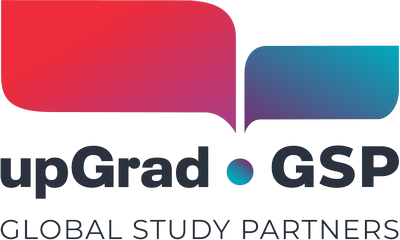Navigating the landscape of studying in the US can be daunting at first, especially when considering how much it all costs. In this brief guide, we delve into the numbers to provide you with a comprehensive understanding of the cost of US education, the living expenses as an international student and the impact of global economic trends on your educational journey.
Prioritising affordability
In a recent survey conducted by ICEF Agent Voice, recruitment agents emphasised that 75% of students prioritise “cost of study and living” when choosing a study destination. It surpasses other factors such as work and immigration opportunities.
Many students face financial challenges; a lot of them even have to defer studying abroad or opt for more affordable alternatives. In the same survey, more than half (51%) were reassessing their decision to pursue overseas study. Situations on prioritising finances explain a shift to a more pragmatic approach when considering international education. For many students and their families, immediate financial concerns take precedence and a higher priority.
In the USA, city-level affordability plays a crucial role in decision-making. Recognising the significant variations in living costs between cities and towns, students are looking into institutions in smaller towns as well. These schools may allow prospective international students to experience academic excellence and affordable living expenses compared to larger urban counterparts.
Tuition fees
Despite being one of the most popular destinations for higher education, the USA continues to challenge students with lofty education and lifestyle expenses. Fortunately, people can take advantage of multiple sources of funding, scholarships and financial aid to ease costs.
Most undergraduate degrees in the US last four years, with tuition fees ranging from $5,000 to $50,000 annually.
American universities employ a distinction between in-state and out-of-state students in the computation of tuition fees. A customary four-year public college imposes an annual fee of $10,200 for in-state students, whereas their out-of-state counterparts incur an expense of $26,290. Additionally, private non-profit institutions exhibit an average tuition fee of $35,800. This difference highlights the diverse financial factors or considerations associated with residency status in the context of higher education.
Accommodation and living costs
Living expenses are more budget-friendly in university towns across the Midwest in the US, compared to the East, Northeast and West Coast. Average rent for a basic one-bedroom apartment in a rural area might estimate around $500 per month, while in bustling cities, it can go up to $3,500 or beyond. On-campus dormitories, on average, cost between $5,300 and $8,100 annually. The most affordable rates are offered by two-year public colleges, whereas the other cost alternatives are associated with private non-profit four-year institutions.
Monthly internet service ranges from $35 to $70, with household phone bills averaging $50. Gasoline costs about $0.98 per liter. Public transport passes in certain places can range from $20 to $60, with student discounts available and the annual cost for books and supplies is $1,170 or $390 per semester.
A crucial expense is the student visa (F1), priced at $510 per application. Students must initiate application process for this three to five months prior to the semester starts.
Additional costs include electricity at $50-$120 per month and heating in the same range. State-based variations apply, so check averages for your chosen state. Water, sewage, and rubbish collection contributions can be paid by the landlord, but if it’s a tenant responsibility, it may add up to $50-$75 every three months. Weekly groceries range from $20 to $70 per person depending on diet – the price of fresh fruit and vegetables varies considerably throughout the country.
Financial aid and support for international students
While the expenses of studying in the USA may seem quite considerable, various forms of financial aid are available. Notably, around 85% of full-time undergraduate students at four-year public universities and 89% at private non-profit universities in the USA benefit from financial aid in the form of scholarships, grants, assistantships and work-study schemes. Certain opportunities may only be applicable to U.S. citizens, but numerous financial aid options are available for international students as well.
For instance, the Confederation College has a list of scholarships, awards and bursaries that are specific to international students. Moreover, while international students are not eligible for some federal or state aid, New York Institute of Technology also offers international student aid for people from abroad who may not meet the criteria for such aid. Washington University of Science and Technology, through WUST’s Scholarships Programs & Tuition Assistance is also available domestic and international students which is merit-based. GSP’s partner institutions are committed to offering extensive financial support to admitted international students to fund their studies.
While inflation in destination countries like the USA have comparatively lower rate with a 6.4% since May 2021, this trend affects international students living in host countries and this still poses concerns. Thus, understanding the range of expenses and living costs is vital for prospective students in making well-informed decisions. They must be armed with detailed information on the affordability of education in the USA to maximize their education opportunities more effectively.
To know more about the exciting opportunities available for international students at GSP’s partner institutions, please reach out to our North American team at gspna@upgradgsp.com.




